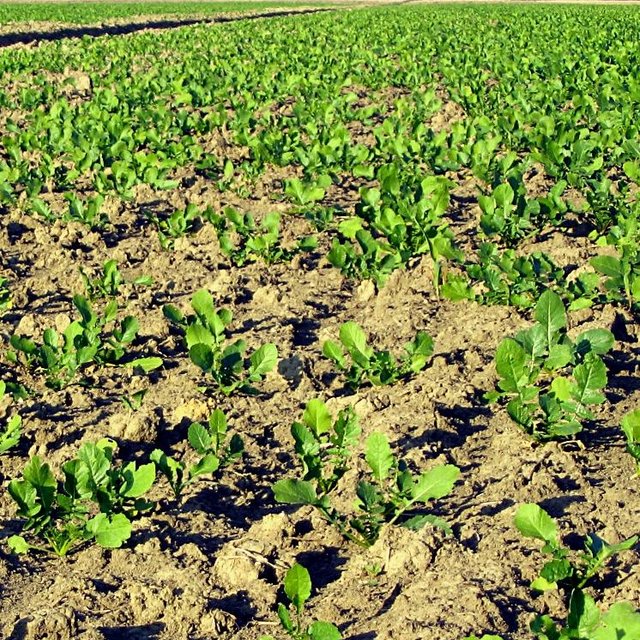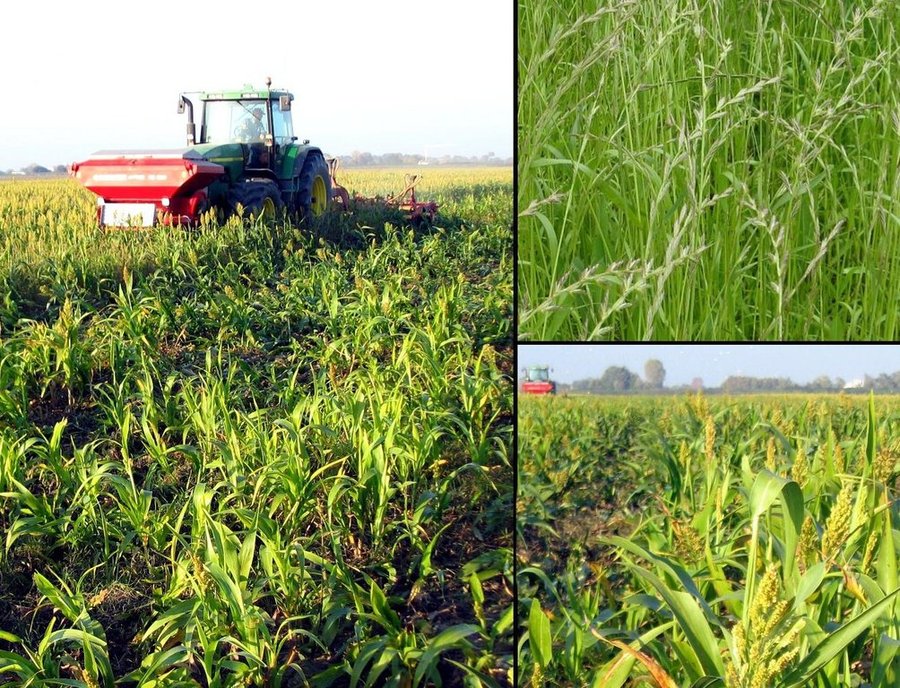



Continuous soil cover on croplands in the Veneto region is characterised by growing seasonal cover crops alternated to the main crop. Continuous cover cropping has been promoted as an agri-environmental measure of the Rural Development Programme (RDP) by Veneto region to extend sustainable land management and reduce diffuse water pollution. Indeed cover crops incorporate available inorganic N that remains within the soil after harvest and reduce water erosion. The type of crop species depends on the crop succession.
Purpose of the Technology: Cover crops have been proposed to the farmers with the aim of reducing environmental impacts of traditional agricultural practices. Compared with systems that does not use cover crops, the continuous soil cover provides long-term agronomical and environmental benefits due to a reduction of negative impacts on agro-ecosystems.
Establishment / maintenance activities and inputs: The application of cover crops involves the alternation of autumn-winter cereals, rapeseed or other herbaceous crops with maize, soybean, sorghum etc. Cover crops that are sown after the main culture are neither fertilized nor treated with pesticides during growing, while at the end of the crop cycle they are buried as green manure in order to improve soil organic matter content, nutrient cycle and finally soil fertility.
Natural / human environment: Growing seasonal cover crops between annual crops have the potential to provide multiple benefits in a cropping system. Cover crops prevent water erosion and pollution as well as increase soil physical properties. Due to the effect of green manure and root growth, cover crops supply nutrients and increase soil organic matter content. They improve soil biodiversity and break pest cycles.
Location: Low Venetian plain of Veneto region, Italy, Italy
No. of Technology sites analysed:
Spread of the Technology: evenly spread over an area (approx. 10-100 km2)
In a permanently protected area?:
Date of implementation: less than 10 years ago (recently)
Type of introduction







| Specify input | Unit | Quantity | Costs per Unit (Euro €) | Total costs per input (Euro €) | % of costs borne by land users |
| Equipment | |||||
| Cover crop chopping | ha | 1.0 | 343.0 | 343.0 | |
| Main crop: seedbed preparation | ha | 1.0 | 191.0 | 191.0 | |
| Main crop: harrowing | ha | 1.0 | 63.0 | 63.0 | |
| Main crop: weed control | ha | 1.0 | 44.5 | 44.5 | |
| Main crop: harvesting | ha | 1.0 | 152.0 | 152.0 | |
| Cover crops: sowing | ha | 1.0 | 121.0 | 121.0 | |
| Plant material | |||||
| Seeds main crop | ha | 1.0 | 190.5 | 190.5 | |
| Seeds cover crop | ha | 1.0 | 191.0 | 191.0 | |
| Fertilizers and biocides | |||||
| Main crop: fertilisation (fertilizer) | ha | 1.0 | 254.0 | 254.0 | |
| Main crop: weed control (biocides) | ha | 1.0 | 125.0 | 125.0 | |
| Total costs for maintenance of the Technology | 1'675.0 | ||||
| Total costs for maintenance of the Technology in USD | 2'093.75 | ||||